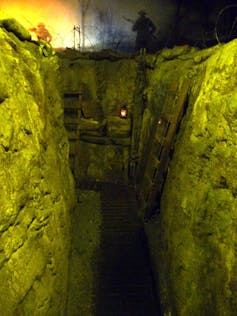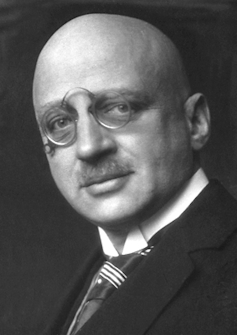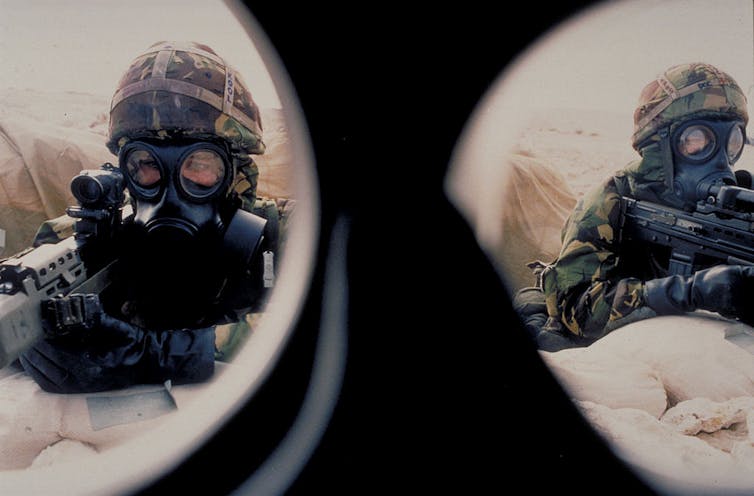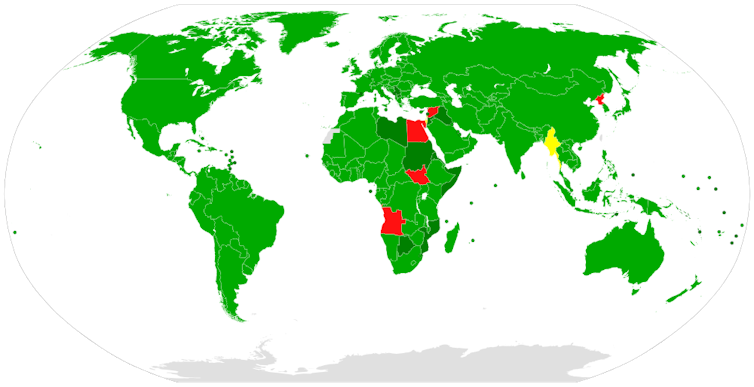Chemical Weapons Are Most Often Designed for Use in
It would take a hard-hearted person not to have been moved to tears by the images on our television screens of Syria over the last week - of infants struggling to breathe while their parents looked on helplessly, and of others foaming at the mouth or twitching uncontrollably.
While new reports have suggested another attack, this time using napalm, the most likely culprit for the signs and symptoms above is the use of organophosphates. These are chemicals which target and inhibit acetylcholinesterase, an enzyme in the nervous system. This results in reduced communication between nerve and muscle causing reduced muscular activity across the body, but the most severe effect is on someone's ability to breathe. It's asphyxiation that kills.
Chlorine gas and a German agent
Less toxic organophospates are widely used as insecticides. But one specific group of organophosphates is likely to have been responsible for most the recent deaths and injuries in Syria - so-called nerve agents. They are extremely potent compounds with no other use than as chemical weapons.

But how did we get to the position of having nerve agents in the first place? To explain this we need to go back a century.
The imagery of World War I is often of troops mired in mud and existing in trenches. Trenches offered protection to both sides and also meant that forward movement was severely constrained - few generals were going to be able to boast of significant advances.
Step forward Fritz Haber. Haber was a very influential chemist in Germany. He was also in the military. Like many scientists he was also patriotic.

Haber suggested an innovative solution to the stalemate of trench warfare: the use of chlorine gas. He argued, correctly, that any troops exposed to chlorine would have no protection and that if they didn't flee the trenches they would die.
Haber persuaded the German High Command to experiment with chlorine in 1915 and 5000 cylinders of the gas were placed close to the front in German trenches ready for release. The first two attempts were abandoned because of a change in wind direction, which meant that any release would affect the German soldiers instead of the British or French.
However, the third attempt was very successful. The troops exposed to the chlorine were Algerian and fighting for France. Many died and many others fled leaving a gap in the Allied lines, which the Germans exploited.
But given the abandonment of the first two attempts because of wind conditions, Germany's commanding officers lost faith in chlorine and failed to provide necessary reinforcements to break through opposing lines and French and British troops quickly regrouped.
The British and French were quick to respond to Germany's use of chlorine and responded in kind within months. Chlorine use was followed by the use of the more toxic gas phosgene. Protection against both of these was achieved using a gas mask. But in 1917, Germany used mustard gas, a chemical which poisons both through inhalation and skin penetration.

Gas masks had then to be supplemented with whole body protective clothing, a situation which persists to this day for those requiring protection against chemical weapons. Perhaps as many as half of Germany's chemists were involved in her chemical weapons programme, with almost equal proportions involved on the Allied side.
Tabun: the first nerve gas
It was in 1936 that the first nerve gas, tabun was made. And in 1938, sarin (which killed 13 people in an attack on the Tokyo subway in 1995) was synthesised.
The work was done by another talented German chemist, Gerhard Schrader. Schrader was making organophosphate insecticides to find suitable ones for use in farming to reduce Germany's import of other insecticides. But realising that these two chemicals were far too toxic to be used by farmers, Schrader informed the authorities. Munitions were made with these agents by the German military but they were never used in World War II because of fears that the British and others would also have them and with their air superiority, Germany would be the ultimate loser.
At the end of the war Soviet, American, and British intelligence found out about the nerve agents and even more toxic ones were subsequently synthesised and weaponised. This was despite the 1925 Geneva Protocol after World War I which outlawed the use of chemical and biological weapons. But that treaty only outlawed first use and countries reserved the right to retaliate if attacked, which meant they could make chemical weapons.
Syria not signed up
The Geneva protocol has since been superseded by the 1997 Chemical Weapons Convention which prohibits any use of chemical weapons and requires signatories to destroy all their stocks of these weapons, never to trade in them and to agree to be inspected to ensure they abide by the convention; 189 countries have now signed this convention - but Syria has not.
Through history there have been attempts to establish rules of engagement. And an agreement that chemical weapons shouldn't be used is a long-standing one. Nevertheless, many countries had these weapons until very recently. And others no doubt have them hidden.
When Haber suggested use of chlorine he envisaged a German breakthrough of the Allied lines, German forces reaching the English Channel and a fairly rapid end to hostilities, with the French and British suing for peace. This would also have meant an end to the slaughter. As it was, the rapid tit-for-tat development of chemical weapons by both sides didn't halt the huge numbers who died in the trenches.
A Nobel prize winner
You can't make chemical weapons without scientists. Haber was a brilliant scientist who subsequently received a Nobel prize for his work on fixing nitrogen from the atmosphere and converting it into ammonia, which enabled the development of artificial fertilisers and explosives.
Haber's prize was controversial and other Nobel laureates boycotted the ceremony. Accounts about the circumstances surrounding the suicide of Haber's first wife shortly after it was first used by Germany include some that attribute it to her opposition and argument over the use of chlorine gas. However, there are few records to unravel this sad mystery.
Scientists can work for governments who want to develop weapons. Most governments have now signaled that they will have nothing to do with chemical weapons. Part of this will be to police their citizens to ensure that chemical weapons aren't made or developed.

Numerous scientific organisations are also developing educational material to make chemists and other scientists aware of the dangers of chemical weapons, and the danger they pose to unarmed civilians.
The events in Syria will have made this all the more evident. It's to be hoped that all scientists will regard chemical weapons as beyond the pale - just as their governments do - and that their own ethical standpoint will forbid their involvement in developing something so heinous.
Chemical Weapons Are Most Often Designed for Use in
Source: https://theconversation.com/chemical-weapons-and-the-scientists-who-make-them-17701
0 Response to "Chemical Weapons Are Most Often Designed for Use in"
Post a Comment